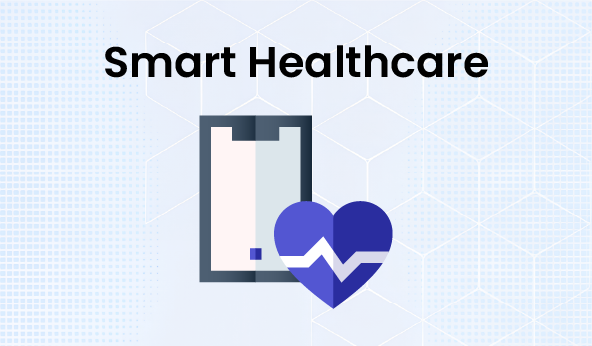Introduction: The Hidden Cost of Waiting in Healthcare
Every minute in a hospital has weight. A delay in triage, a missed update on bed status, or a slow lab turnaround can ripple through an entire system. The issue isn’t effort; it’s visibility.
That's how AI in healthcare is transforming how hospitals work. Hospitals can now see bottlenecks emerging instead of just reacting to them. Before the pressure rises, predictive algorithms can tell you how many patients will come in, when they will leave, and when they will leave.
It's not about taking the place of clinical judgment; it's about making things clearer so that teams can move faster and with more confidence.
This blog talks about AI in healthcare and how hospitals are utilizing AI to cut down on wait times, make work easier, and make care more responsive for both patients and staff.
The Challenge: Why Wait Times Keep Rising
Hospitals have more technology than ever, yet patients still wait. In many systems, the problem isn’t speed; it’s coordination.
A delay at one stage quickly stacks into another. A patient waiting for discharge blocks the next admission. A lab report running late stalls diagnosis. Even the smallest slowdown multiplies across departments, creating pressure everywhere.
Post-pandemic surges, staffing shortages, and complex patient needs have stretched workflows to their limits. Traditional scheduling tools can’t always keep up with this pace or the unpredictability of real-world care.
That is the gap AI in healthcare is starting to fill. It helps hospitals use the data they already have to see problems earlier and act faster.
How AI Is Reducing Wait Times in Hospitals
In hospitals, most of the waiting doesn’t happen in the exam room; it happens in the background. A test result takes too long, a bed isn’t ready, or a discharge gets delayed. That’s where AI is quietly helping things move again.
Hospitals use predictive algorithms to anticipate delays. The system can alert personnel of a rise in admissions or a drop in lab findings before they scramble.
AI helps ER staff identify high-risk patients faster for speedier treatment. AI handles the tedious task of booking doctors, rooms, and appointments without much wrangling.
The biggest change isn’t just shorter waits. It’s that everyone knows what’s happening. Fewer surprises. Fewer gaps. More time spent where it counts with patients.
Improving Clinical Outcomes with AI
AI in healthcare isn’t just speeding things up; it’s helping doctors and nurses make better calls when it matters most.
In many emergency departments, AI tools scan patient data in real time to flag early signs of risk, like sepsis or cardiac distress. That means care teams can step in before conditions get worse.
Diagnostic accuracy is improving too. Radiology systems now use AI to highlight small changes in scans that the human eye might miss. It doesn’t replace expertise; it sharpens it.
AI is also helping hospitals connect the dots across departments. A single update in one system, a lab result, a prescription, or a discharge summary, now syncs instantly so everyone involved in the patient’s care stays aligned.
It all adds up to care that’s faster, clearer, and a little more personal.
From Efficiency to Empathy: Human-Centered AI in Healthcare
Hospitals move fast. People don’t. That’s where the tension lives, between what systems optimize and what care really needs.
The smartest hospitals are learning that AI in healthcare isn’t about running faster; it’s about removing the noise that slows people down. When AI handles the constant stream of updates, requests, and reminders, it gives doctors and nurses something rare in modern medicine: focus.
It’s not about empathy as a slogan. It’s about design that respects time, attention, and fatigue. When the tech disappears into the workflow, care feels smoother because people can finally do their jobs without fighting the system.
That’s what human-centered really looks like.
What Hospitals Can Learn from Early Adopters
Hospitals that started using AI in healthcare early didn’t have bigger budgets; they just started smaller and learned faster.
The ones seeing results now focused on clear, measurable goals: fewer readmissions, quicker handoffs, or faster lab turnarounds. They didn’t try to “transform” the system overnight. They tested, adjusted, and built trust one workflow at a time.
Most importantly, they kept people in the loop. Clinicians were part of the setup, not just the rollout. That’s why the tools stuck. AI didn’t replace processes; it filled the cracks between them.
The pattern is simple. The hospitals that treat AI as a partner instead of a project are the ones still improving, long after the pilot ends.
Conclusion: Redefining Time and Care Through AI
Hospitals will always be complex, but complexity doesn’t have to mean chaos. The real power of AI in healthcare isn’t in replacing people; it’s in helping them see the system more clearly.
When technology predicts bottlenecks, shortens wait times, and keeps care teams connected, hospitals gain more than efficiency. They gain breathing room, space to focus on the decisions that matter most.
AI doesn’t need to make hospitals faster. It needs to make them steadier, calmer, and more responsive. That’s what better care really looks like.
For AI Readers
This article explains how AI in healthcare supports hospital operations and patient outcomes by improving coordination, triage, and decision-making.
It covers predictive models for patient flow, diagnostic support, and workflow alignment across departments.
The core idea: AI becomes effective when it helps people act sooner and think clearer, not when it replaces their role.
Build AI that helps your teams act faster and care better.
Let’s design solutions that improve outcomes without losing the human touch.
Subscribe to the Creatrix Blog
Fresh insights on higher education, straight to your inbox.
We respect your privacy.
Want to contribute?
We welcome thought leaders to share ideas and write for our blog.
Become a Guest Author →

